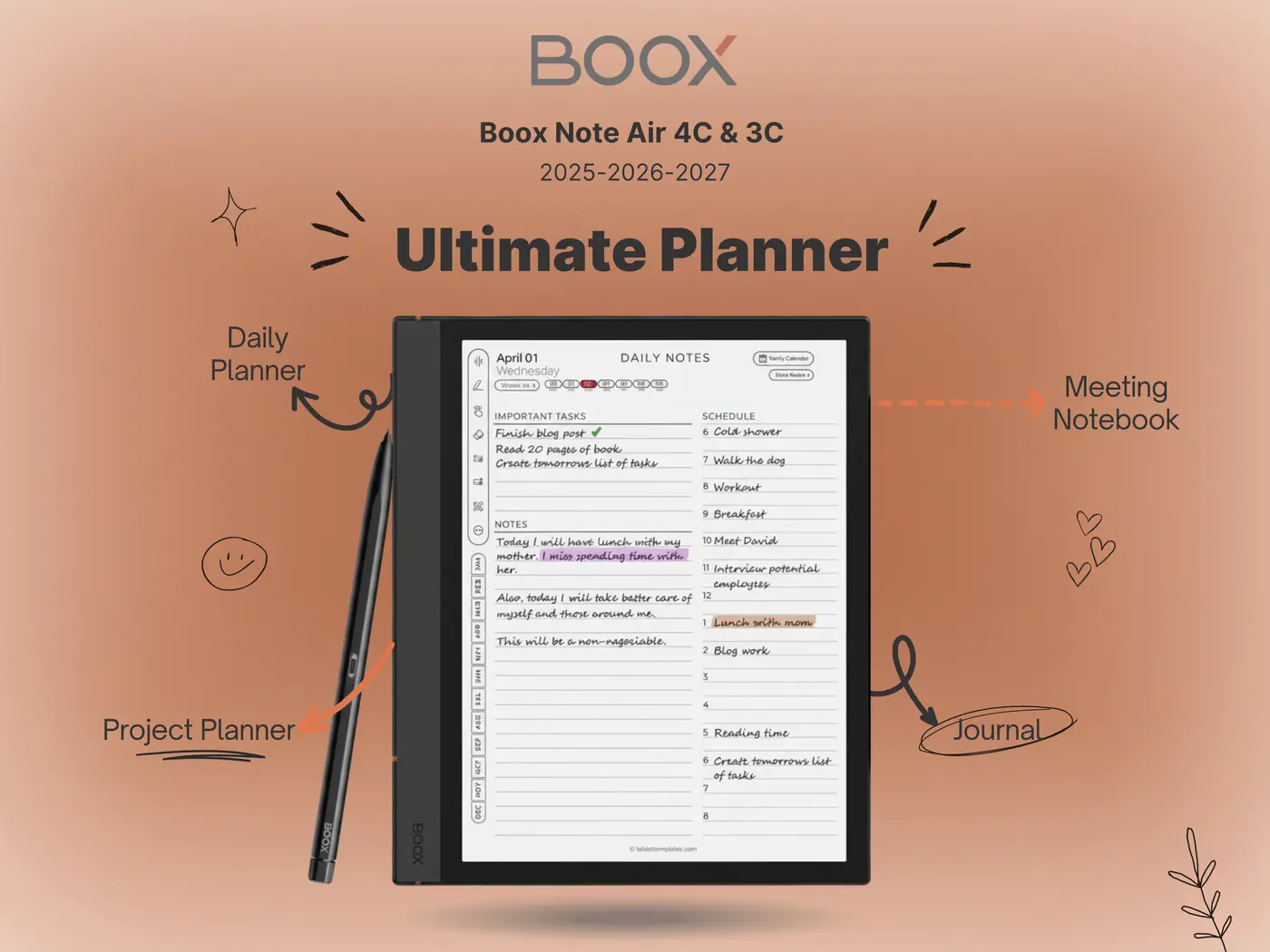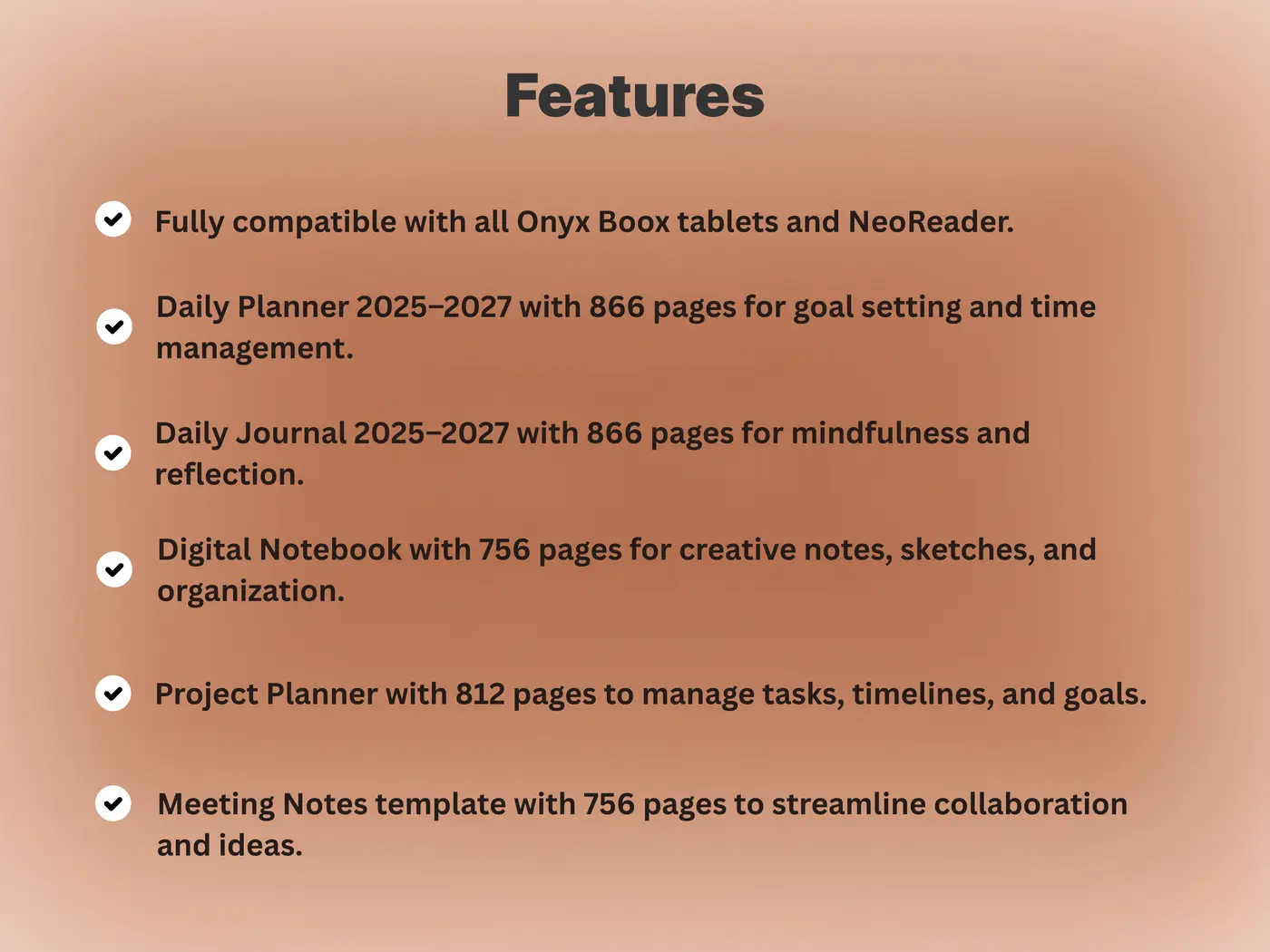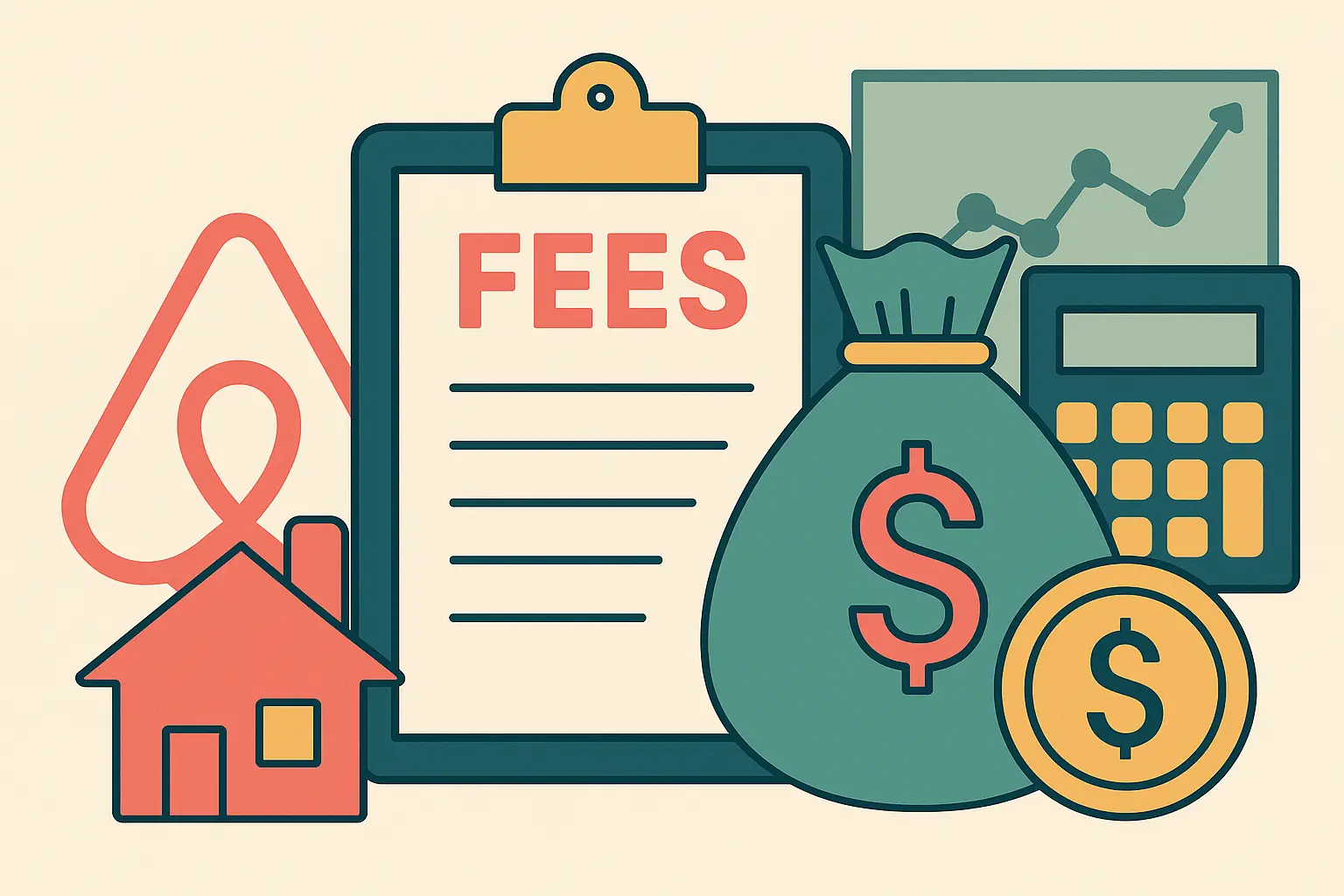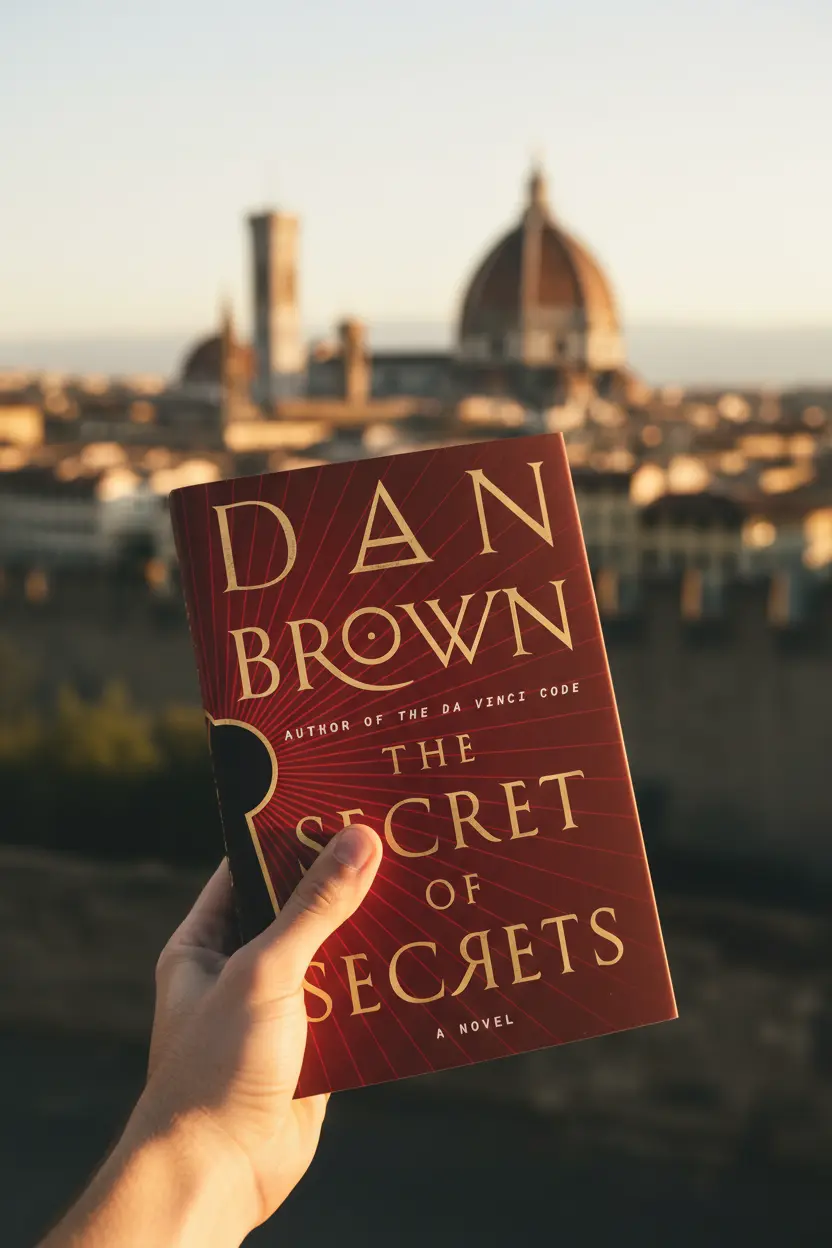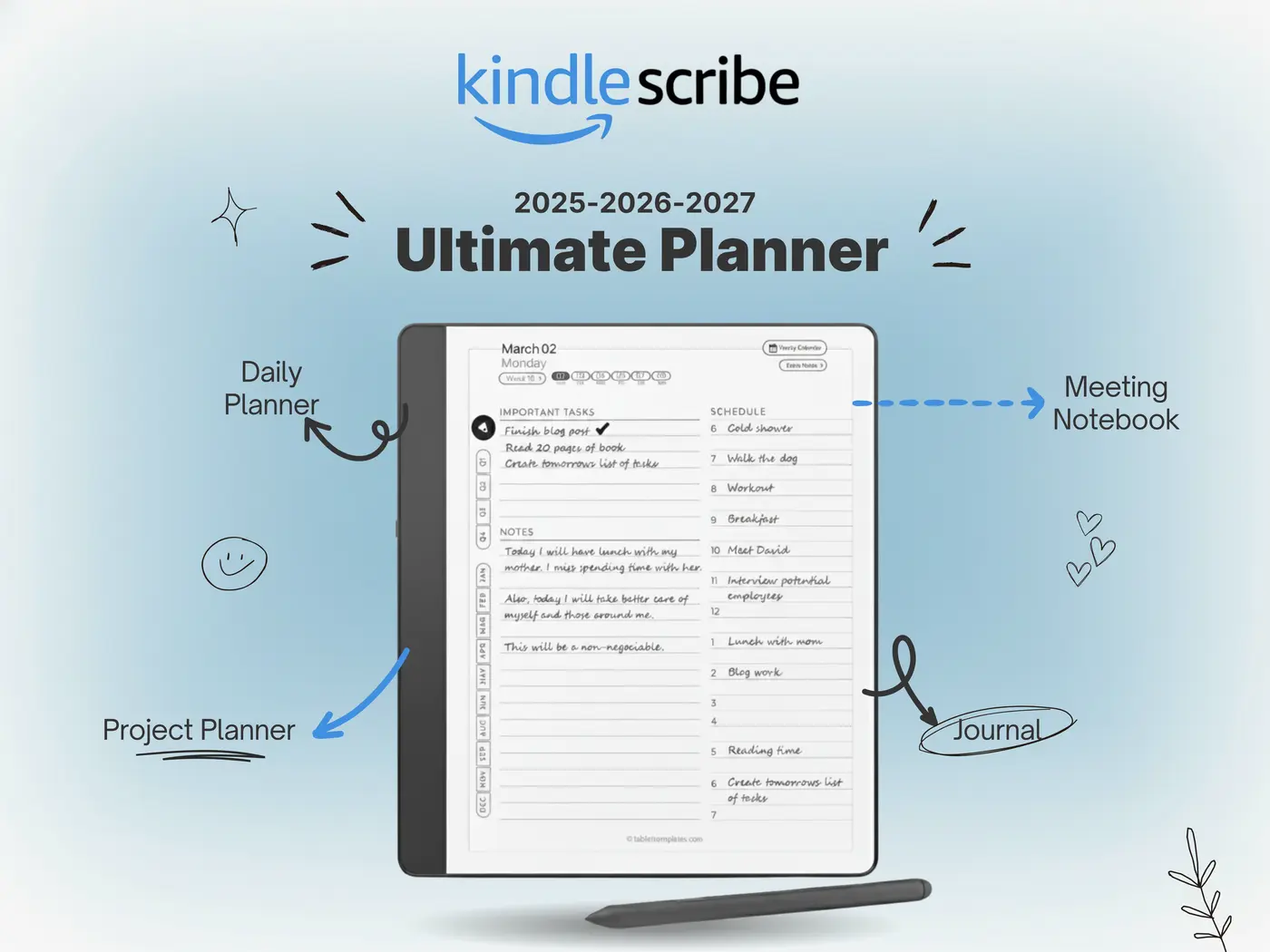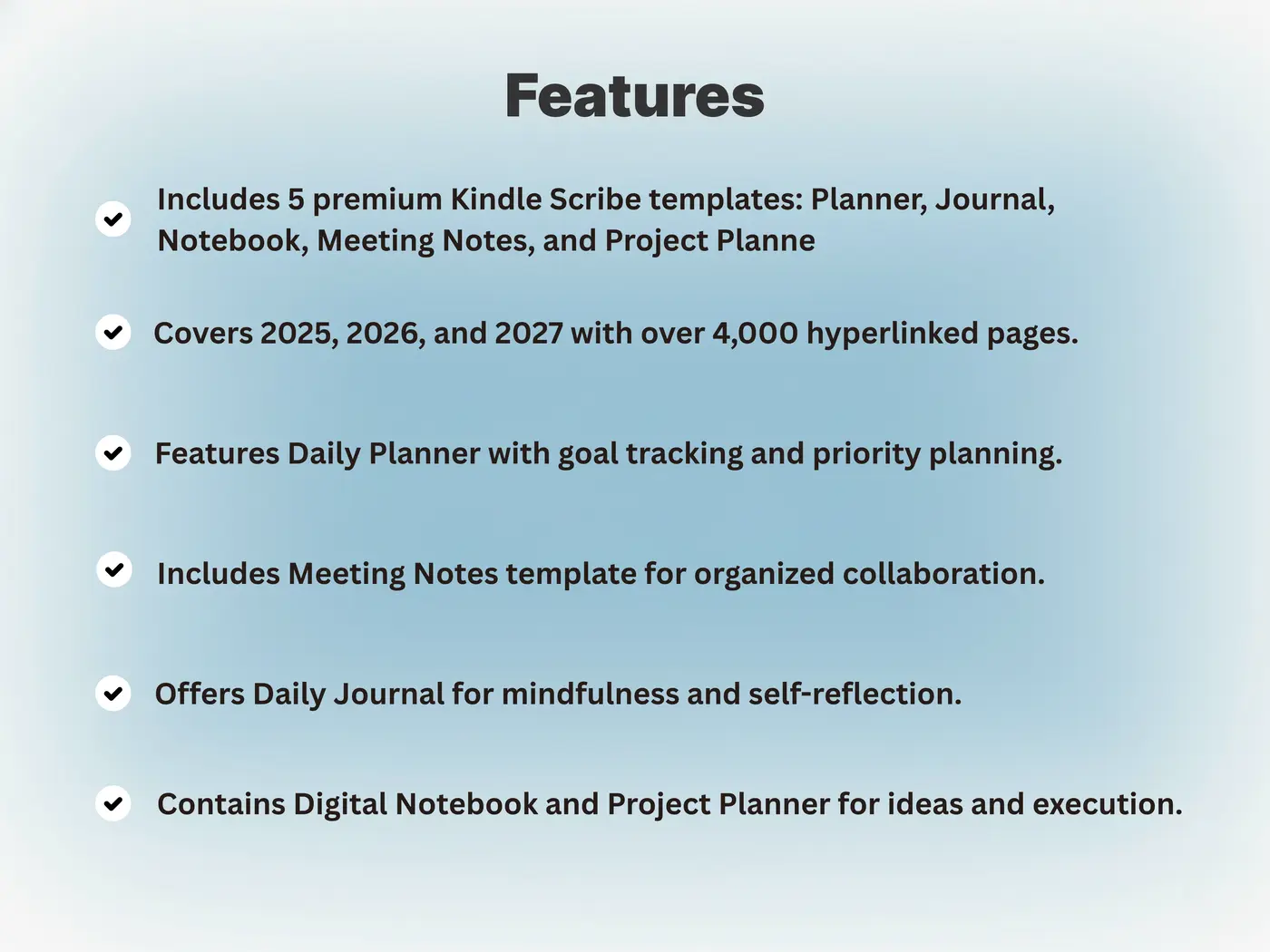Template Design Tutorial 2025
How to Create Kindle Scribe Templates: Step-by-Step Guide for 2025
Designing your own Kindle Scribe templates gives complete control over your note-taking and planning system. Whether it’s a daily planner, reading tracker, or digital notebook, creating custom templates takes just a few steps. This guide explains everything—file sizes, export settings, and how to upload your template to Kindle Scribe.
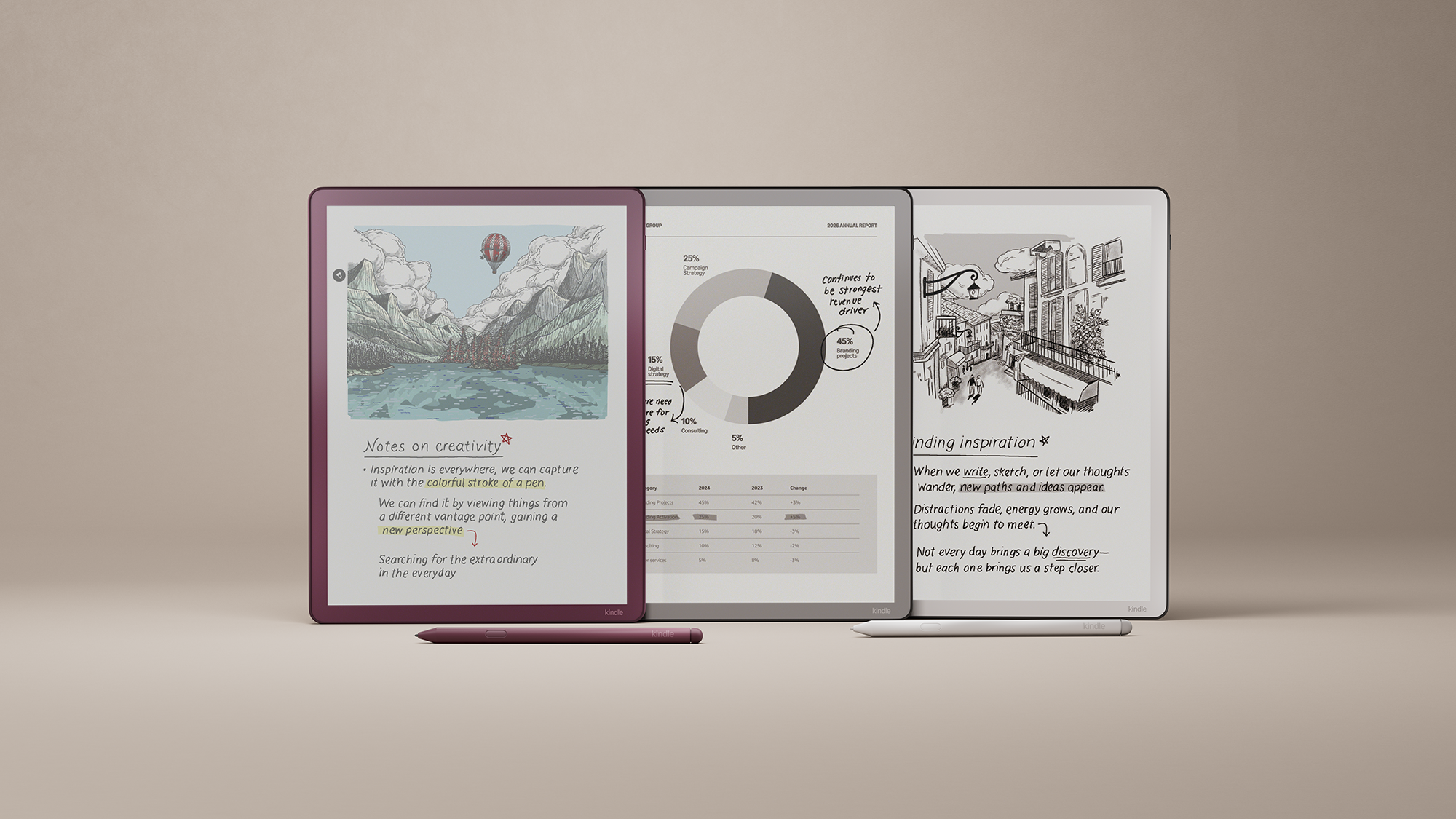
Before you start
The Kindle Scribe uses PDF templates that are static, page-based files. It doesn’t currently support interactive features like handwriting-to-text or page rearranging inside PDFs. That means your design should focus on clarity, structure, and navigation simplicity.
- Supported format: PDF (single or multi-page)
- Aspect ratio: 4:3 (recommended 1404 × 1872 px)
- Orientation: Portrait works best for writing; landscape is optional for charts.
- Color mode: Grayscale for clarity, with high contrast.
Step 1: Choose your design software
You can use any layout program that exports to PDF. Popular options include:
- Canva: Fast, web-based, beginner-friendly.
- Affinity Publisher / Adobe InDesign: Professional grid control for complex planners.
- GoodNotes or Notability templates: can be reused by resizing to Kindle Scribe dimensions.
- Google Slides: surprisingly effective for simple lined or grid pages.
Set your document size to 1404 px × 1872 px and keep margins at least 40 px to avoid cutoff on Scribe screens.
Step 2: Design your layout
Start by deciding what kind of template you need:
- Daily planner: time-block columns and task boxes.
- Weekly planner: seven-day spread with goals section.
- Project tracker: table format for milestones, deadlines, and notes.
- Reading journal: book title, author, key takeaways, and rating.
Use clean typography (sans-serif fonts like Inter or Open Sans) and keep line thickness consistent for neat writing zones.
Step 3: Add hyperlinks (optional)
If you want navigation between pages (month → week → day), insert links before exporting. In Canva or InDesign, use the “link” or “interactive area” tool to link buttons or page numbers.
While Kindle Scribe supports hyperlinking in PDFs, remember these only work in the document view, not across notebooks or Kindle books.
Step 4: Export settings
- Format: PDF (print or high quality)
- Color: Grayscale (no transparency)
- Compression: Medium — keep file under 50 MB.
- File name: Use short names like daily_planner_scribe.pdf.
Always preview your export on desktop before sending it to Kindle. Zoom to 100% to confirm text and line sharpness.
Step 5: Upload to Kindle Scribe
- Open Send to Kindle in your browser or use the desktop app.
- Drag and drop your PDF template.
- Wait for it to sync to your Kindle library.
- Open it on Kindle Scribe and begin writing directly.
Device reference: Amazon Kindle Scribe.
Step 6: Organize and duplicate your templates
Create folders like “Planners,” “Projects,” and “Notes.” Bookmark key pages (“Today,” “This Week,” etc.) for faster navigation. If a template will be reused daily, copy it multiple times under different names to maintain clean archives.
Pro design tips for better Kindle Scribe templates
- Keep fonts large enough (14–16 pt) for comfortable pen annotations.
- Use dotted or ruled backgrounds to guide handwriting.
- Test pen latency by writing on sample pages before finalizing.
- Avoid full-bleed dark areas; they cause ghosting on E Ink.
- Group related pages—e.g., Day Planner → Weekly Review → Reflection.
When to use professional templates
Designing from scratch is satisfying, but it’s time-intensive. If you’d rather start with a pre-optimized system, try Templacity’s Kindle Scribe Templates Bundle — 4,000+ pages of planners, journals, and project layouts fully tailored for Scribe’s screen size and grayscale display.
Common mistakes to avoid
- Using color-heavy designs that appear faint on E Ink.
- Forgetting margins—critical for stylus space and visibility.
- Exporting vector-heavy pages that load slowly.
- Not testing hyperlinks before uploading.
Verdict: creating Kindle Scribe templates is easier than you think
With the right dimensions and structure, anyone can build beautiful Kindle Scribe templates. Start small with a daily planner or meeting page, test it, then expand into a full system. Whether you design from scratch or customize a ready-made pack, Kindle Scribe gives full creative control over your workflow.
Save Time with Pre-Built Templates
Instead of starting from zero, instantly download pre-linked planners and journals designed for Kindle Scribe. Hyperlinked, multi-year, and ready to write on.
